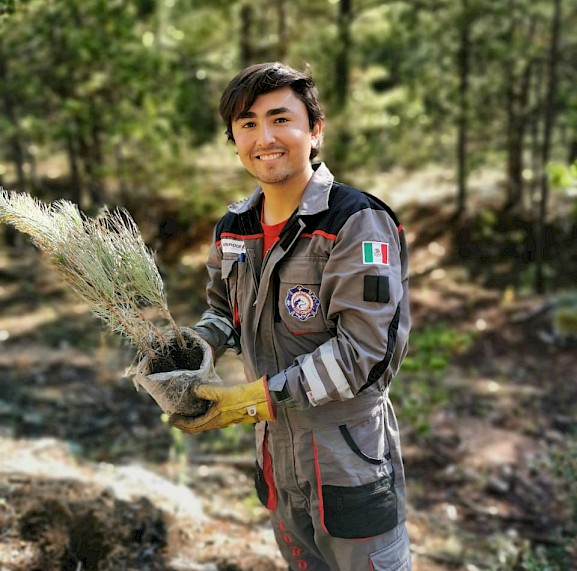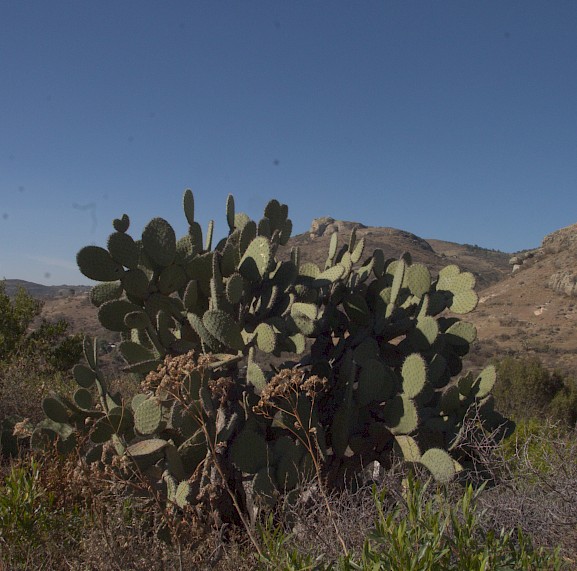-
Sustainability: Planet
Water and Biodiversity Stewardship
Approach: Our commitments and practices
Water ConsumptionWe carefully consider local water supply and water stress levels when we plan the water requirements for developing, operating, expanding and rehabilitating our mines, and in our exploration and pre-development work. Water sources for our operations include surface water, ground water and water extracted from the mining process and filtered and wet tailings.
Climate conditions are different at each of our mines: Guanaceví is located in a region classified as low-medium water stress, while Bolañitos and Terronera are in higher water risk ranges.1
We constantly aim to maximize recirculation and minimize freshwater use, and we are actively engaged with local communities in Mexico regarding water availability and efficient use.
Our main focus is water recycling, to minimize our impact on local water resources. In fact, we recover and reuse more than 85% of water used in the mining process.
 Water Discharge
Water DischargeDischarge and runoff from mine sites can impact waterways, so we carefully manage and monitor this issue to prevent water pollution. We rely on diversion systems, containment ponds, groundwater pumps, sub-surface drainage systems and sub-surface barriers. Our Bolañitos mine has zero discharge into its surrounding natural environment. All water used in the mining process is collected and recycled back into the system.
As our Guanaceví mine lies partly below the water table, discharges of water are in accordance with regulatory requirements and corporate standards, which include consideration of aquatic and land-based ecosystem environments, as well as potential downstream community users. Guanaceví operates in a climate with abundant ground water that drains into the mine. We pump fresh water from the mine, check quality and then release it into the Guanaceví River to supplement supply water to the town of Guanaceví for non-potable use in the community. Additionally, the Guanaceví mine has a water treatment plant for the campsite.
 Flora and Fauna Protection
Flora and Fauna ProtectionAt our sites, we have conducted initial environmental impact assessments to identify endangered or at-risk flora or fauna. We have found that our activities generate no significant impacts on local biodiversity.
All our operating sites and the Terronera Project have a Fauna and Flora Management Plan and operate a nursery to grow local flora. Through our reforestation program, we replenish land in Mexico impacted by our mining activities. Over the past four years (2021-2024), we have planted more than 227,000 trees, with a collective survival rate of 70%.
Our Fauna and Flora Management Plan specifies that any fauna that is found in our operations (regardless of the protection status) is identified, rescued and relocated. At all our sites, hunting is not allowed. None of our properties contain threatened species, according to the world’s most comprehensive inventory of threatened plant and animal species, the International Union for the Conservation of Nature (IUCN) Red List. However, there are some species around our operations with special status:
- The Cascabel snake has protected status in Mexico and is present at all our sites. We have trained our people to identify, rescue and relocate Cascabel snakes if found.
- Near Guanaceví, a species of white-tailed deer, while not endangered, is protected from hunting. We have posted no-hunting signage in the area.
- At Terronera, sampling and identification of species continues to deepen over the regional environmental system, creating a robust biodiversity database.
- In addition, to mitigate our activities here, Endeavour established a breeding centre (UMA) for white-tailed deer for future release into the wild.
We believe that development and conservation can coexist in harmony, and we make every effort to reduce and mitigate any possible impacts to soil affected by our operations. Our Bolañitos site has no acid drainage potential and in Guanaceví it is managed through the Mining Waste Management Plan, which is approved by the regulatory authorities.
1 Based on the World Resources Institute's (WRI) Aqueduct Water Risk Atlas.

- Home
- About
- Portfolio
- Sustainability
- Investors
- News & Media
- Blog
- Contact
- Careers
© 2025 Endeavour Silver Corp.
All rights reserved.
Cookies are used to make this website work and to enhance your experience. To learn more about the types of cookies this website uses, see our Cookie Policy. You can provide consent by clicking the "I Consent" button or by canceling this cookie notice.
Cookies are used to make this website work and to enhance your experience. To learn more about the types of cookies this website uses, see our Cookie Policy. We need your consent to use marketing cookies. Marketing cookies are used to track visitors across websites. The intention is to display ads (via third party services) that are relevant and engaging for individual users. Please select the checkbox below to indicate your consent.

